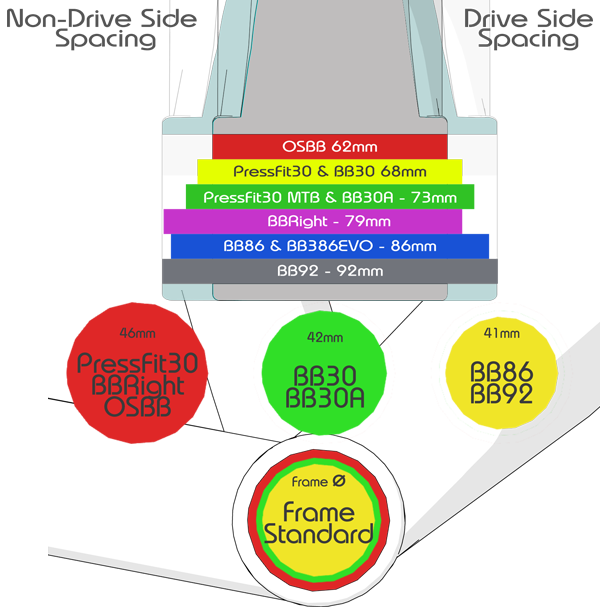Bottom Bracket Selection Guide


Hey everyone, it's Wes from BBInfinite engineering. I decided to drop a blog when I dug out a bunch of old rear derailleur jockey pulley design notes(blogging gold). I evaluated some then new at the time SRAM AXS OEM pulleys taken off a Red rear derailleur we were lucky to get well before the official release of the first group sets. In this blog I compare the BBInfinite AXS pulley design with the factory SRAM AXS pulleys.
Lets begin by looking at the SRAM AXS pulley design, then compare that to BBInfinite AXS pulley design.
I think you are going to like what we’ve done for you with our AXS pulleys.


Now that I had them in hand, I decided to see what SRAM engineers were up with their latest in shifting tech. First thing I noticed was how narrow the pulley stance was. After dropping a caliper across the faces it looks to be 6.4mm (.25”) . This is right a about 2mm narrower than previous gen pulleys. Wanting to know a little more I decided to check out what SRAM is doing to behind the dust covers.
The S51545-2RS looks to be a custom bearing that I can only find in SRAM Axis pulleys. The S51545-2RS bearing dimensions are (6mm x 15mm x 4.5mm).
The bearing design incorporates 9 steel ball bearings, each steel ball has a diameter of 2mm.


Ok so what did BBInfinite do different? Our design approach here is high performance low maintenace. The first feature is our oversized outer race. When any pulley is overmolded onto a bearing the outside bearing race will experience compressive force from the shrinking cooling plastic. This means our race is thicker which makes the race stronger to counter these forces. Our outer race thickness is 1.75mm compared to Factory SRAM race at 1.5mm
Next we upgraded the bearing material. The Factory SRAM pulley use a steel ball bearing. Our pulley ball bearings are made of Silicon Nitride Ceramic. This ceramic ball combined with our propeitry treated steel race means this pulley set is part of the Ceramitech family.


Since we doing a complete redesign we decide a larger Ceramic ball would allow us to drop the ball count which ultimately reduces pulley friction. We upgraded the ball from ø2mm to ø2.4mm while reducing the ball count from 9 to 8 balls in our design. The philosophy here is more rolling elements means more surface area so more friction which means more resistance so more torque would be required to turn at the same speed as a bearing with fewer rolling elements.
Comments will be approved before showing up.
